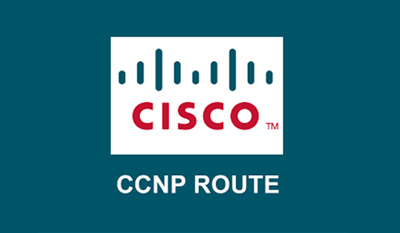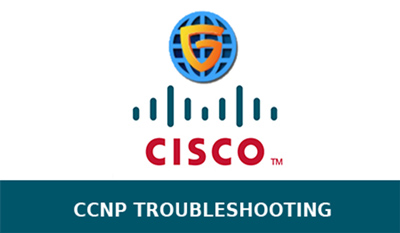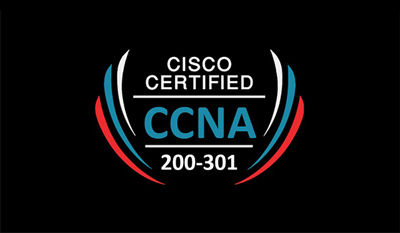Key features of Our Hardware and Networking Training
100% ASSURED JOB IN HARDWARE AND NETWORKING TRAINING
PAY MONEY AFTER PLACEMENT
100% PRACTICAL TRAINING
COURSE FEES : Rs. 15,000/-
IICT gives continuous and situation centered Hardware and Networking Training . Our equipment and systems administration course incorporates fundamental to cutting edge level and our PC organizing course is intended to get the position in great MNC organizations as fast as once you complete the systems administration LAN, WAN instructional class. Our PC organizing mentor is equipment and systems administration affirmed master and experienced working experts with hands on continuous numerous Networking ventures information. We have structured our PC organizing course substance and prospectus dependent on understudies prerequisite to accomplish everybody’s vocation objective. In our PC organizing preparing program, you will master Networking Basics, Wired Networking ideas, Local Area Network, WAN, Wireless Networking, Network Security, organizing access control, investigating, PC organizing ongoing venture and equipment and systems administration position preparing. For Certification Details Visit Comptia Website.
Our services extended to body massage, health and beauty spa field, Medical, IT Sectors and many more sectors.
IT Infrastructure support is offered for Aroma heven Spa ...
Our equipment and systems administration preparing focus is outfitted with lab offices and magnificent foundation. We additionally give equipment and systems administration accreditation preparing way for our understudies . We have prepared more than 10000+ PC organizing understudies and gave arrangement. Our equipment and systems administration course charge is an incentive for cash and customized course expense dependent on the every understudy’s preparation necessities. Our Hardware and Networking Training Center directed on day time classes, end of the week instructional courses, evening group classes and quick track instructional courses
Hardware Module and Troubleshooting
Introduction of Computer
Generation of Computers
Classification of Computers
Parts of Computer(Units)
Parts of Motherboard
- Chipset
- Expansion Slot
- Memory Module
- Processor Socket
- Drive Connectors
- BIOS
- CMOS
- Front Panel Connectors
- Port Connectors
- Power Connectors
Assembling Notes
Jumper Settings
Assembling Practical
Practice
DOS Introduction
BIOS Setups
DOS Commands
- File
- Directory
- Attribute Commands
- Practice
Files System (FAT & NTFS)
XP OS Installation
User Creation
XP Features
- Firewall
- Disk Management
- Add or Remove Program
Driver Finding with Software
- Method of Device Drivers Configuration
- Application Software Installation
- Practice
Dual OS Installtion XP with windows 7/8
OS Upgrade
OS Edition
OS Bits (32 & 64)
Practice
XP 1st & 2nd Repair
Reg edit (D Word Value)
GP Edit
Restore
Disk Clean Up
Disk Defragmentation
OS Management
- SAFE MODE Configuration
- MS-Config
- Temp
- %temp%
- Prefetch
- Virtual Memory
- OS Activation
- Windows 7 & 8 Features
- Windows 7 & 8 Updates
- Recovery (Repair)
- Updates and Patches
E-mail Configuration
- Difference B/W Outlook Express & Outlook
- E-mail Creation
- Mail Backup
- Multiple E-mail Account Configuration
- NewPST Creation
- Set PWD for the PST
- Change Sync. Time duration
- Add Contact & Group
- Rule Creation
NT Backup
OS Backup (Norton Ghost)
HirenBoot opions
Virus
Antivirus
Practice
Test – Hardware Module and Troubleshooting
Network Module and Trouble shooting
Network Introduction
Types of Network
How do we Network ?
Diff OS Family
Workgroup and Domain Network
Types of Topology
Types of Media
- NIC
- Hub
- Switch
- Router
- OSI Model
- Cables
Cable Crimping Methods
Protocols
IP Address
Crimping Practice
XP with XP – Workgroup NW Configuration
IP Configuration
Files and Folder Sharing & Permission
Workgroup User Management
- User Creation
- User Level files access permission
- Practice
Remote Desktop
Remote Assistance
Net Meeting
Offline File Sharing
Practice
2003 Server OS
- ADS Configuration
- DHCP Configuration
- Client Configuration
- User Management
- Files and Folder Sharing
- Profiles
- Practice
User and Folder Level Permission
- User or Group Configuration
- Sharing Permission
- Logon locally
- Complicity Password
Profiles
- Default Profile
- Roaming Profile
- NT Backup
- Practice
Terminal Server
IIS Server
FTP Server Configuration
NT Backup & Restore
2008 Server OS
- ADS Configuration
- DHCP Configuration
- Client Configuration
User Management
Files and Folder Sharing
Profiles
Practice
Group Policy
- Changing Default Password Policy
- Enabling Password Lock out Policy
- Complicity Policy (Password Length)
- Changing Allow Logon Locally Policy
Test – Network Module
2008 & 2012 System Administration and Troubleshooting
Introduction of Windows Server 2008 R2 & 2012
Features and Editions
Logical Structure of Server (Domain, Tree, Forest)
2008 & 2012 OS Installation
ADS and DNS Installtion
Creating User Accounts
Client Configuration
User Configuration
- Logon Hours
- Log on to
- Password Reset
- Password Unlock
Group Configuration
- Types of Groups
- Difference between Local, Global and Universal Groups
User Management
FAT & NTFS File System
Sharing Level Permission
Security Level Permission
Offline File Sharing
Local Profile
Roaming Profile
Home Folder
Disk Quota
Shadow Copy
Group Policy
- OU Creation
- OU Level Policy
- Domain Level Policy
- Changing Defaul Password Policy
- Enabling Password Lock out policy / Complicity Policy
- Changing Allow Logon Locally Policy
- Delegating Control
- Software Deployment Policy
- Script Policy
- Wall Paper Policy
Configuring ADC
Configuring Child Domain
Configuring Tree Root Domain
Configuring RODC
FSMO Role Transfer
FSMO Role Seizing
Forest Trust Configuration
DHCP
- Installing DHCP Service
- Creating Scope
- Creating IP Reservcation
- Scope Backup and Restore
DNS
- Installing DNS Service
- Creating AD Integrated Zone
- Creating Standard Forward Lookup Zone
- Creating Standard Reverse Lookup Zone
IIS
- Installing IIS Service
- Website Creation
- IIS Configuration (Website Hosting)
FTP
- Installing FTP Service
- Creating do not Isolate Users FTP Sites
- Creating Isolate users FTP Site
RARS
- Install RARS Configuration
- RARS Verification
RDP
- Terminal Server Configuration
- RDP Server Configuration
2003 & 2008 R2 Migration
RAID Simulation
Q & A
Practice
Chip level Training Course Syllabus
Week 1: Introductions – Basic Electronics Parts, Laptop Servicing Tools, Testing Equipments
Week 2: Laptop Parts View
Week 3: Laptop Complete Disassembling & Assembling (Any 3 Models)
Week 4: Laptop Complete Disassembling & Assembling (Any 3 Models)
Week 5: Laptop Complete Disassembling & Assembling (Any 3 Models)
Week 6: Trouble Shooting Hardwares
Week 7: OS & Softwares Installation
Week 8: Driver Installation and Troubleshooting
Week 9: Laptop Spare parts Purchase Address details
Week 10: Practice
Week 1: Introductions – Basic Electronics Parts, Laptop Servicing Tools, Testing Equipments
A.Introductions
- 1.What is laptop?
- 2.Types of Laptop Service
- 3.Difference between laptop and desktop
- 4.LATOP MANUFACTURING COMPANIES-Acer /Apple /Compaq /Dell -etc
- 5.How to buy a laptop?
- 6. Operating System review
B. Laptop Service Tools
- 1. ScrewDriver Kit
- 2. Laptop Casing Opener
- 3. Nose Pliers
- 4. Cutter
C. Laptop Chip Level Tools
- 1. Micro Soldering Iron
- 2. Tip Soldering Iron
- 3. Hot Air Blower
- 4. Magnifying Lenz with Lamp
TESTING EUIPMENTS
- Analog & Digital MultiMate
- RCL Meter
- Universal AC Adapter
Resistor
- 1. Types of Resistor
- 2. Colour Ranges
- 3. How to check the Resistor?
Capacitor
- 1. Types of Capacitor
- 2. How to check the Capacitor?
Integrated Circuit(IC)
- 1. Types of IC
- 2. How to check the IC?
Inductor
- 1. Types of Inductor
- 2. How to check the Inductor?
Diode
- 1. Types of Diode
- 2. How to check the Diode?
Transistor
- 1. Types of Transistor
- 2. How to check the Transistor?
Transformer
- 1. Types of Transformer
- 2. How to check the Transformer?
Multimeters
- 1. Types of Multimeters
- 2. How to check the Multimeters?
Week 2: Laptop Parts View
Laptop Parts View
- 1.Laptop
- 2.Batteries
- 3.Speakers
- 4.Hard Disks
- 5.Network Cards
- 6.DVD Drives
- 7.Fans
- 8.Processors
- 9.Adaptors
- 10.Mother boards
- 11.Keyboards
- 12.Screens
- 13.RAM
- 14.Touchpads
- 15.Web Cameras
- 16.Wi-fi card
- 17.Display
RAM & TYPES OF RAM:
- RAM [STATIC RAM]
- DRAM [DYNAMIC RAM]
- Types of Dynamic RAM
Laptops RAM slot review:
- SODIMM [Small Outline Dual Inline Memory Module]
- Micro DIMM [Micro Dual Inline Memory Module]
- RAM comparison of DDR 1 /DDR2 & DDR3.
- DDR1 & DDR2 RAM BUS SPEED list
- DDR3 memory speed list
- RAM working voltage list
- RAM manufacturing companies
Hard disk & TYPES OF Hard disk:
- What is hard disk?
- Types of hard disk
- IDE Hard disk
- SATA Hard disk
- External Hard disk
- Hard disk manufacturing companies
- SATA to USB convertor & IDE to USB convertor
- Hard disk inside components & its function
- Failure symptoms for hard disk
- Hard disk maintenance guide
PCMCIA CARD & DVD DRIVE
- Wireless Card
- Usb Card [Single/Double/Four]
- Network Card (LAN)
- Dvd
- Serial Port
- Card Reader
- Sound Card
Optical drive:
Internal drive (laptop inside using this drives) & External drive
- CD ROM
- CD r/w
- DVD ROM
- Compo drive
- DVD r/w
- HD DVD r/w
- Blu – ray drive
- Various type of DVD drive interfaces
External CD ROM & other devices:
External blue – ray drive
Notebook slim CD to desktop IDE CD converter/CD/DVD writing software/DVD viewing software
SPEAKER:
- Internal speakers
- External Speaker
WI-FI CARDS review:
- WI-FI card parts /How to Connect the Wi-Fi to Internet?
What Is Laptop Motherboard?
Laptop Motherboard Functional Block Diagram & Its Function
Acer Laptop Motherboard Functional Block Diagram
Motherboard Brands List:
- Compaq Motherboard
- HP Motherboard
- Acer Motherboard
- Dell Motherboard
- IBM Lenovo Motherboard
- Sony Motherboard
- Toshiba Motherboard
- Apple Motherboard
- Fujitsu Motherboard
- Samsung Motherboard
Week 3: Laptop Complete Disassembling & Assembling (Any 3 Models)
Laptop Complete Disassembling & Assembling
- Compaq Laptop
- HP Laptop
- Acer Laptop
Week 4: Laptop Complete Disassembling & Assembling (Any 3 Models)
Laptop Complete Disassembling & Assembling
- Dell Laptop
- IBM Lenovo Laptop
- Sony Laptop
Week 5: Laptop Complete Disassembling & Assembling (Any 3 Models)
Laptop Complete Disassembling & Assembling
- Toshiba Laptop
- Hasee Laptop
- Samsung Laptop
Week 6: Trouble Shooting Hardwares
Trouble Shooting Hardwares (Laptop screens, Panels & etc)
Week 7: OS & Softwares Installation
- OS Introduction
- Win XP os installation
- Win 7, Win 8,win10 os installation
Week 8: Driver Installation and Troubleshooting
Drivers Installation & Updates
- Batteries
- Disk Drives
- Display Adapters
- USB
- Network Controllers
- Processors
- Monitors
- Keyboards
- OS Maintenance : Temp file deletion, virtual memory ,Disk cleanup /Defragment
Week 9: Laptop Spare parts Purchase Address details
Laptop Spare parts Purchase Address details
Week 10: Practice
Hardware and Networking Basic Interview Questions
Computer hardware A+ Question Paper I
1. POST stands for:
a) printer online standard test
b) positive operating system test
c) power on self-test
d) printer online static test
2. PCMCIA stands for “personal computer memory card international association”. PC cards are:
a) not hot swappable
b) plug and play
c) not plug and play
d) used only in mainframes
3. A switching power supply steps down voltage by means of:
a) a network of capacitors
b) a network of resistor conduits
c) transformers
d) turning off and back on in rapid cycles
4. Pick the correct choice for the 8088 CPU.
a) 16 bit word size, 8 bit data path
b) 8 bit word size, 16 bit data path
c) 16 bit word size, 16 bit data path
d) 8 bit word size, 8 bit data path
5. The upper memory area is located:
a) between 640k and 1024k
b) above 1 meg
c) between 512k and 840k
d) anything above 1024k
6. In CMOS setup, if you enable Rom Bios Shadowing, what happens?
a) rom cannot be used by the bios
b) rom memory is minimized
c) rom memory is maximized
d) a copy of the bios is placed in ram
7. Memory that is paged out to the hard drive is known as:
a) extended memory
b) virtual memory
c) conventional memory
d) memory cannot be paged to the hard drive
8. Which of the following is least likely to be affected by a virus?
a) Floppy disk
b) Hard drive
c) BIOS in ROM
d) A file in RAM
9. Which color PS/2 port to connect Keyboard and which colour port to connect mouse?
10. North Bridge is used for connecting ———- and ————–?
11. High level formatting is applying ————– on the magnetic storage mediums?
12. USB 2.0 transfers data at ———– speed?
13. A sector can hold ——- bytes?
14. SATA stands for ———— and it’s version two transfers data at ————- speed?
15. Red colour wire indicates ———- voltage and yellow colour indicates ——— voltage in SMPS?
16. Standard DVD of DSDL can store ———— GB of data?
17. Processor has ————– and ————— as its main internal parts?
18. Processors are manufactured using ———– and ——— technology?
19. Which device service is attached to IRQ1?
20. DMA controller specially used for managing —————-?
21. Which colour wire in SMPS indicates +3.3V?
22. Wi-Fi standards are ——, ——, ——?
23. RAID0 provides high fault tolerance? Yes or No?
24. RAID 5 supports ——- no of device failure and RAID6 supports ——- no of device failure?
25. Which one is highest print priority in the following numbers- (44, 85, 22, 01, and 00)?
26. What is printer pooling?
a) Adding additional printer memory b) buffer memory c) grouping identical printers d) none
27. Continuous beep sound indicates error of ————-?
28. Dual core has ——- physical cores and Quad core has———- physical cores?
29. Which one is best method of trouble shooting a monitor?
a) Connect monitor to other system and confirm b) remove VGA bus from system and look for
flag c) call monitor technician and rectify d) check VGA card
30. Fiber optic connectors are—— and ——?
31. Write some of the number systems used in computer?
32. USB supports —— devices?
33. Write some expansion slots names?
34. Write some RAM types?
35. SDRAM should be placed in ——–slots in system board?
36. FDC and HDC pins are ——- and ——- respectively?
37. CPU has —— and —- BUS?
38. North Bridge is faster than south bridge? Yes or NO?
39. Before upgrading your operating system, you should first:
a) remove TSRs b. backup your hard drive c. edit the startup files d. run scandisk
40. You wish to see the hidden files in a directory and you type “DIR /AH”. Does this work?
a) yes b. no
41. What is the command file used to bring up the Registry editor?
a) regist.exe b. editreg.com c. redit.bat d. openreg.exe e. regedit.exe
42. Select all the file systems that Windows 2000/XP/2003 supports:
a) vfat b. fat 16 c. fat32 d. cdfs e. ntfs
43. Twisted-pair cable uses what type of connector?
a) RJ-11 b. XT-20 c. RJ-45 d. RJ-50 e. RP-21
44. The system BIOS and ROM chips are called:
a) Software b. Hardware c. Firmware d. Boot ware
45. Which of the following is both input/output device?
a) Modem b. keyboard c. mouse d. monitor
46. Write some of the important boot files in windows XP?
47. When an OS in a PC is corrupted, what is the best corrective method?
a. Repair the OS b. Restart and Press F8 try with some best options to recover
c. Re-install the OS d. Install the OS in other partition
48. System freezes now and then, what is the likely problem?
a. CPU fan not running properly b. Too many applications opened at time
c. Virus infected the system d. All of the above
49. Write any one special feature of RAID 1?
50. CD-ROM drive can be connected to —–?
a. Special CD-ROM port b. EIDE port c. SATA port d. PATA port








